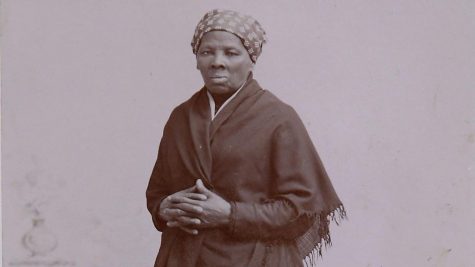Harriet Tubman: Road to Freedom
February 20, 2020

Across our history, many people thought there should be equal rights for African Americans, including the Reverend Martin Luther King JR., Maya Angelou, Malcolm X, and Barack Obama. Each of them took action in their own way and during their own particular point in the history of the United States in order to move our population to a better state of mind, one that involves both equality and tolerance, both freedom and genuine brotherly love. Going back into our nation’s history, one need only look to the first half of the 1800s to find someone taking action, fighting in her own way to make these ideas become a reality, someone related to two current Mayo Spartans. That woman is Harriet Tubman.
The name given to her at birth was Araminta Ross, but most people called her “Minty.” The free name she chose was Harriet Tubman. Born on a plantation in Dorchester County, Maryland around 1820, Harriet began to seek justice for Blacks at the young age of 12. She became aware of the fact that the Underground Railroad led 90 miles north to Pennsylvania and freedom. She and two others escaped the plantation in Maryland; unfortunately, the other two, her brothers, changed their minds and went back to the plantation.
Once free, Harriet alone led at least 70 slaves to freedom, including her elderly parents; historical accounts tell of many others whom Harriet taught to escape by themselves. Risking her life, she made many trips back and forth to help others gain freedom, all the while never losing a passenger or a life.
Things intensified for Ms. Tubman when the 1850 Fugitive Slave Act was enacted, allowing fugitives and free slaves in the North to be captured and enslaved. She had to be even more careful about being caught herself. When the Civil War began in 1861, Harriet Tubman found new ways to fight slavery. She was asked to help runaway slaves at Fort Monroe, a Federal military installation in Virginia near the mouth of the Chesapeake Bay, the spot known for the ironclad battle between the Monitor and the Merrimac. This fort was also used to house refugee slaves. She worked as a nurse, a cook and a laundress there. Ms. Tubman used her knowledge of herbal medicines to help treat sick soldiers and runaway slaves, helping them return to good health.
Many slaves wanted to be free, but they never wanted to take action, in fear of being beaten or killed. Harriet Tubman was a big part of a movement that tried to get rid of this evil in the South while helping get freedom for African Americans. Harriet Tubman made a big impact on the world in a good way, because she made everyone think about slavery and how terrible it really is. However, her efforts were not solely focused on this atrocity.

Harriet Tubman also helped the Women’s Suffrage Movement, showing that women can do anything, especially to vote and to be an active voice in the democratic process. She worked with Susan B. Anthony and others to further this cause. That has impacted people across the world, calling on everyone to think twice about each woman in society, demanding that everyone be treated fairly and given the same opportunities to express themselves and to strive for better lives.
All this leads to another impact which is that Harriet Tubman’s influence might hopefully open closed minds and dissuade obstinate views towards women and blacks. Tubman once said “I would fight for my liberty so long as my strength lasted, and if the time came for me to go, the Lord would let them take me.” She was a very determined woman and would do anything to get the freedom Blacks deserve. She stayed focused on her goal despite threats, temptations, and distractions that may have taken her off the “freedom road.”
Today, we have seen an African American president and a woman running for president; both have beaten the odds and expectations of “traditional roles” for African Americans and women in society and politics. Tubman taught us about defying expectations and taking action.
Sources:
“Black History – Art – Tribute to Harriet Tubman.” Wreckamic’s Blog, wreckamic.blogspot.com/2011/02/black-history-art-tribute-to-harriet.html.
“History & Culture.” National Parks Service, U.S. Department of the Interior, www.nps.gov/fomr/learn/historyculture/index.htm.
History.com Editors. “Harriet Tubman.” History.com, A&E Television Networks, 29 Oct. 2009, www.history.com/topics/black-history/harriet-tubman.
Pictures courtesy of:
http://1.bp.blogspot.com/_YefAjfiPmVs/TUrZyJUhSuI/AAAAAAAAAIA/zO5VgD2VraA/s1600/Harriet+Tubman.jpg
Person. “Treasury Official Says Harriet Tubman Will Go on $20 Bill.” WFAA, WFAA, 20 Apr. 2016, www.wfaa.com/article/news/nation/treasury-official-says-harriet-tubman-will-go-on-20-bill/145194252.




